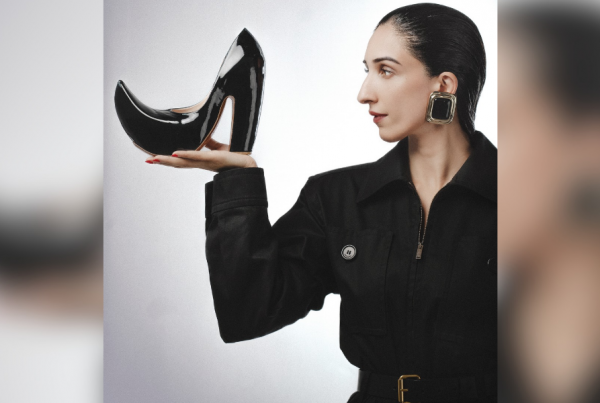Featuring contemporary and cost-effective clothing, Daraz Fashion Week 2016 made a strong case for instantly available, online fashion.
‘See-now, buy-now’ is the new fashion mantra, increasingly being tested by brands that realize the need for speed in this cyber-driven-instant-access world. The six-month fashion week lead period is being challenged as consumers are unwilling to wait half a year for a style that goes viral as soon as it is shown on the catwalk and appears old and exhausted by the time it makes it to the stores. Brands like Burberry, Tom Ford and Tommy Hilfiger are already experimenting with the new format. It’s what Pakistan needed and the Daraz Fashion Week 2016, held in Karachi this Wednesday and making the collections instantly available online over the next three days, is exactly how fashion weeks in the country should think of operating in the future.
Seven prolific designers were asked to create 10 looks each, exclusively for DFW16, a venture promoted as Pakistan’s first shoppable fashion show in the country. “We pitched the concept to top designers in Pakistan, designers who we thought will be able to fully capture the essence of this kind of an event in their collections,†Saman Javed, Head of Corporate Communications at Daraz spoke to Instep. “We got a super positive response from the ones who believe in innovation and wish to connect with the masses and that is when we knew that we are all set to revolutionize the fashion industry – with such big names by your side, you know you’re doing something right.â€

Generation
Selected designers were given two months for planning and production. 70 looks were unraveled on the catwalk and within minutes, each and every look went online. Jena Bautmans, Fashion Director at Daraz.pk, moved from Paris to Karachi six months ago and had been working with the designers to get the looks, sizes and production right. They were given the simple brief to design for the masses and the creativity was left to their discretion. Production has always been a big challenge for designers in the country but in this case Daraz worked with them and bought the collections ahead of the show; they were retail ready by the time the evening ended.
Featuring Zara Shahjahan, Feeha Jamshed, Tena Durrani, Deepak Perwani, Amir Adnan, Generation and Bank Alfalah Rising Talent winner of 2014, Hamza Bukhari, the show was a cost-effective, no fuss affair. Held at the Artist’s Commune it began with a dramatic introduction from Yousuf Bashir Qureshi and then proceeded to what mattered: the fashion.

Zara Shahjahan
Designers stuck to their signatures and were diverse as well as distinctive. Tulip and lunghi shalwars emerged the ‘must-buy’ trend for summer (go online for Generation, Tena Durrani and Zara Shahjahan if you’re still looking) and designers offered light and easy variations on the lowers and tunics. Tena Durrani mixed and matched her prints for some very impressive silhouettes (again, featuring a shorter tulip) and Generation even offered a very Boho, printed palazzo-gharara. Feeha Jamshed stuck to her trademark styles with jumpsuits and loosely belted silhouettes. It was all very easy on the eyes.
It was also refreshing to see so many wearable, affordable clothes from such a diverse set of names. Generation, Zara Shahjahan and Deepak Perwani kept things traditional, Tena Durrani and Feeha Jamshed showed a lot of fusion, Amir Adnan showcased menswear and Hamza Bokhari edged towards light eveningwear. Interestingly, by midday Friday, we learnt that Generation, Tena Durrani and Hamza Bokhari were top sellers on the site, with Zara Shahjahan and Amir Adnan following close.

Tena Durrani
Pakistan’s fashion has struggled for the lack of a transient population, low to almost no tourism plus a tiny middle class population and this has impacted fashion-generated revenues. It’s also a next to impossible hardship for most designers, especially young ones, to open and maintain standalone stores let alone high street operations. Day to day challenges make the logistics tough and overheads unbearably high, thus effecting and spiking the price of the final product. Fashion Weeks have historically suffered because of designers who manage to showcase beautiful collections but fail to deliver; the clothes seen on the catwalks are seldom seen in stores. And finally, the cost of putting an average fashion week together is usually so burdensome that lack of adequate funds often reflects in the look and feel of the event.
With all that managed and minimized at an event like DFW16, this is what prêt-à -porter fashion weeks in the country should aim to look like. There’s actually no longer a need to have elaborate shows for ready to wear, off the rack clothing. The lavish three or four day fashion weeks held in Lahore and Karachi are an unnecessary extravagance that can be avoided. Let red carpet glamour, drama and oomph be reserved for couture shows, held usually in September, and transform prêt shows to simple, shoppable events that generate online buzz and effectively, the business of fashion.
There is always room for improvement; that’s needless to say. A better pool of models, smarter and more stylish accessories and the need for better pre-show advertising was eminent. It’ll take a season or two for Daraz to build a reputation and begin resonating with buyers online; it won’t be long before fashion aficionados begin anticipating Daraz FW. Organizers of the event plan to hold this as an annual rendezvous, an opportunity for high-end designers to connect with the masses. This is a great concept, especially since all these designers this time were high end and the content they showed was smart and stylish.
An event like the Daraz Fashion Week 2016 provides solutions, not just fashionable and clothing solutions to online shoppers, but solutions to fashion councils who spend the better part of their time organizing fashion weeks. Fashion weeks have been monumental in building the fashion industry but with buying and media behavior shifting from stores and print to cyberspace, it does make sense to rethink the entire format, especially for ready to wear fashion.
“This event isn’t just about making sales,†Ms Javed reiterated when asked about the success of the venture. “This event is about taking high fashion to all of Pakistan. Watching someone who couldn’t avail a Feeha Jamshed outfit previously, strut around in her latest FJ jumpsuit is how we will determine success.â€






sitenizdeki yazilar cok guzel